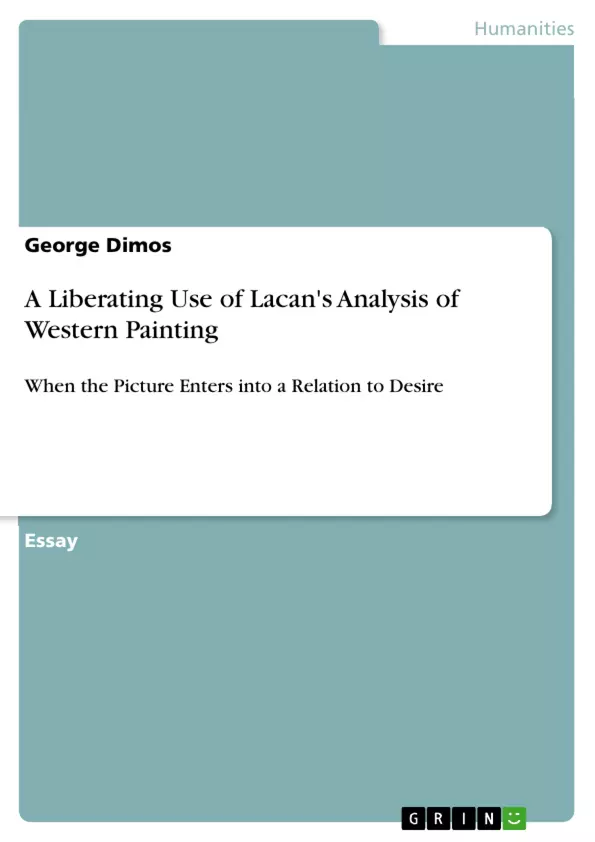This text presents one of the very few opportunities one can have to escape from the eternal voyage round and round the moebius strip of psychoanalysis. This escape can be achieved in general by using the Lacanian construction.
Lacan was the most authoritative psychoanalyst after Freund and maybe the last one; since his theory (although he never admitted it; always insisting that he is a follower of Freund) proved the limitations of the Freudian paradigm (not only from the point of view of logic) making clear that the annihilation of the possibility of a subject hood is unavoidable in psychoanalysis. Of course the avoidance of this annihilation might be not the purpose of psychoanalysis but it is a populist belief and a populist expected outcome of psychoanalysis.
The use of (a) is the only reaction to the annihilation and in psychoanalysis this object (a) takes always the form of a secretion. This text describes what is involved in the process of creating and watching a Western Painting according to the Lacanian Theory. It also provides the means for the escape we mentioned before which is an escape from the ‘Law’ from the pair of the eyes that are always looking at us through a Western Painting.
Reading this text requires a thorough knowledge of the Freudian and Lacanian literature but also of the French so called philosophical, postmodernist concepts.
Inhaltsverzeichnis (Table of Contents)
- The Depth of the Field
- The Screen
- To Give to Be Seen: The Painter
- Dompte Regard
- The Subject at Times Attempts to Assume His Own Role
- Parenthesis: Lacan's Objet Petit a
Zielsetzung und Themenschwerpunkte (Objectives and Key Themes)
This text explores Lacan's analysis of Western painting, particularly focusing on how the picture relates to desire. It aims to move beyond traditional formal art criticism by incorporating Lacanian concepts and providing a new perspective on the relationship between the subject, the artwork, and the viewer.
- Lacan's critique of traditional art criticism
- The concept of "depth of the field" and its implications for visual perception
- The role of the "screen" in mediating the relationship between the subject and the picture
- The relationship between the subject and the object of desire
- The potential for active intervention in the imaginary relationship
Zusammenfassung der Kapitel (Chapter Summaries)
- The Depth of the Field: This chapter introduces Lacan's critique of traditional art criticism, which assumes a subject capable of self-reflection. Lacan emphasizes the importance of "depth of the field," highlighting how the viewer's perception is not simply a geometric relationship but involves a complex interplay of desire and unconscious elements.
- The Screen: This chapter explores the concept of the "screen" as a mediating element between the subject and the picture. The screen is not a physical object but a symbolic space where the subject and the picture confront each other, revealing their disjuncture and potential for confrontation.
- To Give to Be Seen: The Painter: This chapter examines the role of the painter as a figure who makes themselves visible and thereby enters into a relationship with desire.
- Dompte Regard: This chapter delves into the idea of "taming the gaze" and how it relates to the subject's control over the object of desire.
- The Subject at Times Attempts to Assume His Own Role: This chapter discusses the subject's attempt to unite with itself and assume its own role, examining the potential for unity and coherence within the fragmented subject.
Schlüsselwörter (Keywords)
Key concepts and terms include Lacan, psychoanalysis, Western painting, desire, depth of the field, screen, subject, object, gaze, imaginary, symbolic, unconscious, and the relationship between art and the viewer.
- Arbeit zitieren
- George Dimos (Autor:in), 1987, A Liberating Use of Lacan's Analysis of Western Painting, München, GRIN Verlag, https://www.grin.com/document/366121



